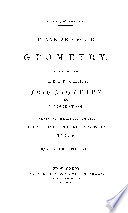 | George Roberts Perkins - Geometry - 1856 - 460 pages
...nearly. ARITHMETICAL CALCULATIONS BY LOGARITHMS. § 27. Multiplication by Logarithms. Since the logarithm of the product of two or more factors is equal to the sum of their logarithms, we deduce, for multiplication by logarithms, this RULE. Add the logarithms... | |
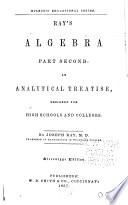 | Joseph Ray - Algebra - 1857 - 408 pages
...of any degree to the most simple form. The principle of Art. 199 may be generalized thus : The n'* root of the product of two or more factors, is equal to the product of the n'* roots of those factors. That is, Vai=VaX V* , which is thus proved : and ( Since the n'* powers... | |
 | Education - 1863 - 746 pages
...reductions and transformations of radical quantities, depend upon the following principles : " " 1. the n" root of the product of two or more factors is equal to the product of their n" roots," &c. Likewise, Loomis' Algebra, edition of 1847, in Article 158, page, 118: " Surds... | |
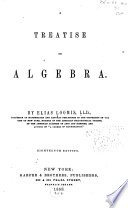 | Elias Loomis - Algebra - 1858 - 394 pages
...simplified by the application of the following principle: the square root of the product of two yr more factors is equal to the product of the square roots of those factors. Or, in algebraic language, For each member of this equation squared will give the same... | |
 | Elias Loomis - Logarithms - 1859 - 372 pages
...98.7654; " " " 1.647817 is .444444. MULTIPLICATION BY LOGARITHMS. (11.) According to Art. 3, the logarithm of the product of two or more factors is equal to the sum of the logarithms of those factors. Hence, for multiplication by logarithms, we have the following... | |
 | George Roberts Perkins - Geometry - 1860 - 472 pages
...ARITHMETICAL CALCULATIONS BY LOGARITHMS. § 27. Multiplication, Try Logarithms. Since the logarithm of the product of two or more factors is equal to the sum of their logarithms, we deduce, for multiplication by logarithms, this • RULE. / Add the logarithms... | |
 | Charles Davies - Algebra - 1861 - 322 pages
...is written thus: Quantities of this kind are called radical quantities, or irra tional quantities, or simply radicals of the second degree. They are also, sometimes called Surds. Such expressions may often be simplified, by employing the principle that, the square root of the product... | |
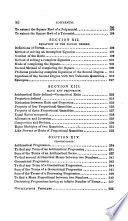 | Elias Loomis - Algebra - 1862 - 312 pages
...Surds may frequently be simplified by the application of the following principle : the square root vf the product of two or more factors is equal to the product of the square roots of those factors : Or, in algebraic language, for each member of this equation, squared, will give the... | |
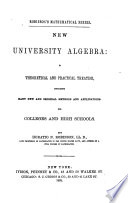 | Horatio Nelson Robinson - Algebra - 1863 - 432 pages
...l * х-}- 1 ж" — l MULTIPLICATION OF RADICALS. 253. It has already been shown (337) that the nth root of the product of two or more factors is equal to the product of t lie nth roots of those factors. And since the converse of this proposition is true, we shall have... | |
 | Benjamin Greenleaf - Algebra - 1864 - 420 pages
...must be divided by the index of the root. For, since the rcth power of am is a"'" (Art. 201), 212. Any root of the product of two or more factors is equal to the product of the same root of each of the factors. For, it has been shown, in raising a quantity composed of factors... | |
| |